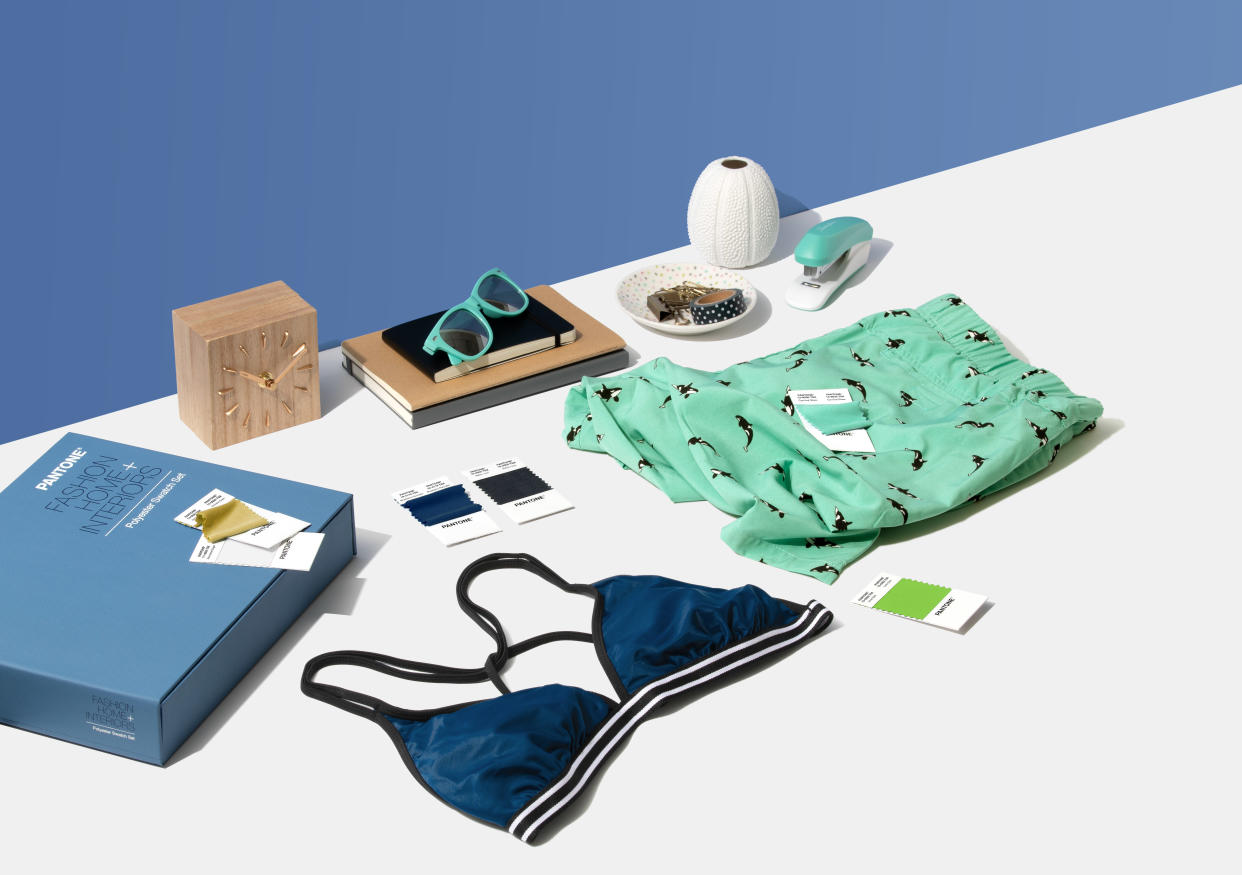Pantone’s Latest Palette Satiates Demand for Intensity, Reflects Selfie Generation

At a time when “standing out” and differentiation is a high priority, brands and retailers are seeking new tips and tricks to satisfy the inner desires of today’s influencers and social media-conscious consumers.
And a panacea for these socially savvy shoppers is Pantone’s new polyester standards product, which boosts the brightness and brilliance of color for textiles in the athleisure, footwear, swimwear, sleepwear and the home and fashion accessories markets. Inspired by the “alternative” textiles taking hold on runways and in street wear, Pantone’s selection of 203 new colors— ranging from “timeless neutrals to eye-popping neons”— is designed for polyester, poly-blends and other synthetic materials. The collection is an addition to the firm’s existing “Fashion, Home + Interiors System.”
Laurie Pressman, the vice president at Pantone Color Institute, told WWD, “We continue to see a demand for color intensity; color that is rich and vibrant and stands out. In today’s selfie-oriented world, self-promotion and self-branding is a way of life for so many people. Color forms an important part of our visual identity and is becoming an increasingly part of that journey, a concept we highlighted in our Pantone Fashion Color Trend Report for Spring/Summer 2018.”
“What’s different [today] is the way in which forces have combined to turbocharge today’s thirst for impactful color,” Pressman added. “Social media is producing a proliferation of immersive color stories as people turn to color to stand out in an increasingly crowded marketplace.”
Its Polyester Swatch Set – dyed on 100 percent warp knit polyester – is arranged with removable swatches for color selection and palette development, inclusive of Polyester Swatch Cards, or 4×4 swatches that unfold to 4×8 swatches for “optimal color visualization, specification and instrumental evaluation,” according to the firm. And its Polyester Spectral Data details exact dye recipes for each color to quicken the process of reaching color intent in production processes.
Pressman said, “In today’s culture where color plays an important part in our visual identity, we see an increasing desire for more saturated colors that help us stand out; colors beyond those formulated for natural fibers; colors whose appearance displays greater hue intensity.” She added, “Our new polyester offering addresses this demand for a deeper level of coloration, resulting in a comprehensive mix of colors relevant across design industries including all fashion and lifestyle-driven markets, as well as home furnishings.”
Consumer-driven demand for technical fabrics, athleisure apparel and other inorganic materials gave traction to Pantone’s move toward heightened color vibrancy. “As new markets highlighting engineered materials continue to emerge, and new inorganic materials enter the market, there is an increasing desire for more saturated colors; colors beyond those formulated for natural fibers; colors whose appearance displays greater hue intensity,” Pressman explained. “Our new Pantone polyester standards address this need and demand for a deeper level of coloration. [The polyester product was] developed much like all products developed by Pantone; to serve the needs of designers by providing material formats that are closest to the end use fabric in which the product will appear.”
Pantone’s new product aligns specifically with polyester due to the color depth achieved with non-cotton formats, as cotton cannot reproduce color with the same degree of clarity or intensity, Pressman noted. Its polyester-centric collection “removes the guesswork” for designers vying for a quickened and streamlined color selection process.
Adrián Fernández, the vice president and general manager at Pantone, said, “We recognize that designers working in synthetic materials face increased color management challenges due to the inability to achieve more vibrant and saturated colors in these materials compared to traditional cotton standards.” Fernández added, “The addition of standards specifically for polyester materials is intended to satisfy this gap in the market, combining our technical expertise with the color intelligence of the Pantone Color Institute, to offer our globally-renowned methods of standardization to rapidly growing segments.”
“Lastly, the way we live today is borderless,” Pressman said. “Whether season, gender or age, not to mention the blurring of lines between professional and personal, the roles and the rules have disappeared. This has greatly changed the way we dress and the colors we wear. Color stories and design styling we may have looked to wear only during our personal time times now carry us through the day into the evening as technical streetwear, athletic apparel and athleisure inspired styling has become as significant as well as a part of what is showing up in couture.”
For More Textiles News From WWD, See:
Food for Thought: Archroma Offers Plant-Based Dye Options
Cone Denim Will Soon Debut New Sustainable Denim
Applied DNA Sciences to Create Anticounterfeiting Sewing Thread
Sustainable Polymers Popularize Across Textile Markets
Merchandise Returns Accrue Waste, Strain Brands and Retailers
Related stories
The Top Fall 2018 Men's Wear Trends: Patterns, Pockets and More
Lofty Goals: PrimaLoft Fast-Tracks Sustainability, Refines Technology
Men's Trend 2018: All the Right Moves
Get more from WWD: Follow us on Twitter, Facebook, Newsletter

